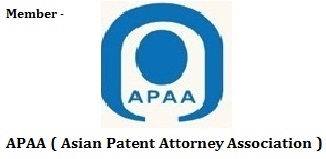Patent Violator List : India Request to Remove from Patent Violator List
The Indian Pharmaceutical Alliance (IPA), the domestic pharma industry lobby group said on Friday it has filed a submission to the US Trade Representative (USTR) to remove India from its priority watch list (PWL) which includes countries that are alleged violators of US patent laws. IPA represents twenty Indian pharmaceutical companies. The body collectively accounts for about 85 percent of private sector investment into pharmaceutical research and development in India and 60 percent of the country’s pharmaceutical exports. In its submission it has urged the USTR for the 2017 Special 301 Review. The 2016 Special 301 Report continued with the placement of India on the watch list despite noting several positives that have contributed to a better environment for the protection and enforcement of intellectual property rights in India. The USTR’s Special 301 report is a Congressionally-mandated annual report that has been issued every year beginning in 1989. It identifies trade barriers to US companies and products in foreign shores due to the host country’s intellectual property laws, including trade-marks, patents, copyright and trade secrets. The US government exerts pressure on the countries in the watch list to address both emerging and continuing concerns and reviews the list annually based on public hearings.
The countries that continue to fail were put on priority foreign country category that mandates the US government to impose unilateral trade sanctions. India was added to the priority watch list by the US government based on complaints of MNC drug makers led by US companies over India’s poor enforcement of intellectual property law. It was with special reference to certain provisions of amended Indian patent law of 2005, including Section 3 (d) which denies a patent grant for incremental research; it also flagged worries over use of compulsory licensing and failure to ensure regulatory data protection. The high profile cases of Novartis blood cancer drug Gleevec – where the patents were invalidated by courts based on Section 3 (d) and the use of compulsory licensing to give Indian drug maker Natco Pharma permission to manufacture and sell a copy of Bayer’s liver and kidney cancer drug Nexavar were often cited by multinational pharma lobby as cases of India’s laxity in protecting intellectual property rights. five key submissions made by IPA on why India should be removed from priority watch list:
Improvement in IPR environment: The improvements demonstrated in 2015 have been sustained and accelerated in 2016. These include improvements in the IPR environment through dialogue and consultation as well as adoption of the National IPR Policy, quadrupling of patent examiners and consistent judicial enforcement in accordance with Indian law.
Compulsory licensing: There has been no grant of compulsory license in 2015 and 2016 or revocation under Section 66. We are also not aware of any abusive patent opposition.
Section 3(d): Section 3(d) of Indian Patent Act has caused considerable apprehension in the past that it would limit the patentability of useful innovations. We have shown that it only limits secondary patents that do not enhance efficacy and typically result in ‘evergreening’. We have also shown that Section 3(d) and Hatch-Waxman provisions are not dissimilar in terms of outcomes. Therefore, Section 3(d) ought not to be of concern. Make in India and preference to local manufacturers: The proposed provision in the Patent Amendment Rules noted in the 2016 Report which gave rise to the apprehension that patent applicants would be pressurized into local manufacture has been dropped.
Data protection: We are unclear about the extent of adverse impact of the lack of data exclusivity on U.S. companies. Though general assertions have been made, no specifics have been provided in past submissions by U.S. companies. We do not expect that the impact will be significant. Our expectation is also borne out by the simulation studies conducted by the United States International Trade Commission (USITC) that the likely increase in employment in the U.S. if India provided for TRIPS-plus IPR on par with the prevalent standard in the U.S. indicated ‘employment gains of less than 10,000 jobs’ for all U.S. sectors put together.


